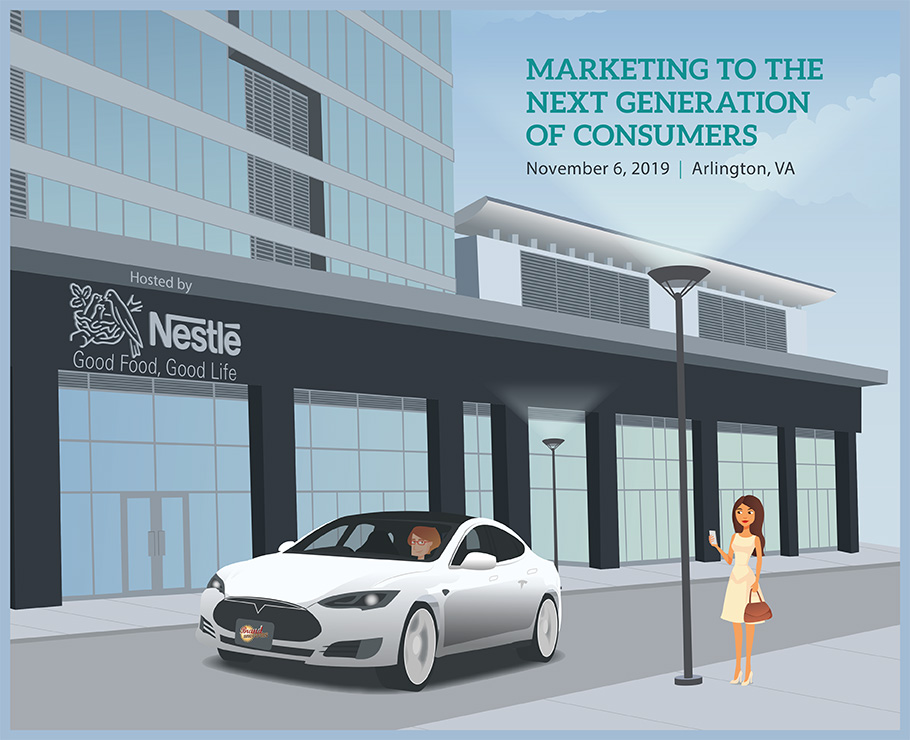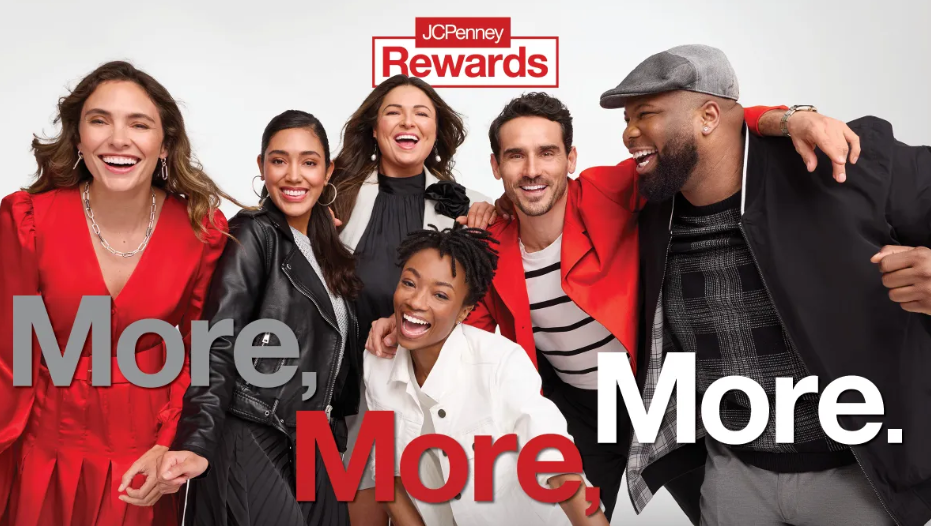If you ever want to see right in front of your eyes how a so-called “legacy” brand can present itself as thoroughly modern, visit the Nestlé USA headquarters on the banks of the Potomac River in Rosslyn, Virginia. The brand may be ~150 years old but the building is a beacon of 21st-century cool and the people who work there clearly have their eyes fixed on the future.
Whether the topic is digital transformation, personalization or connected TV, Nestlé USA marketers return to the same phrase, saying they are focused on “the now and the next.” (We like it–in fact, we’ll be stealing that line for our forthcoming line of BI coffee mugs.)
In her fireside chat that kicked off last week’s BI summit at Nestlé USA, CMO Alicia Enciso had a lot to say about the now and the next” as she surveyed the ever-increasing role of technology inside the brand’s marketing department. “AI can make us smarter,” she told the audience, “helping us reach people in unique ways. We can construct meaningful metrics to better track performance. We can use voice to optimize search. We can use tools like Google Lens to better understand visual search. We can use augmented reality to expand our touchpoints.”
As central as the proverbial MarTech stack may be, Enciso said, the North Star for each brand must continue to be its customers. “It all has to stay focused on one thing: winning with the consumer. Personalization is part of this. We must transform experiences to satisfy them.”

L-R: Marc Sternberg (Co-Founder, Brand Innovators), Alicia Enciso (CMO, Nestlé USA) and Cayal Mathura (SVP-Growth, MediaMonks)
Enciso, who is originally from Mexico, stressed the importance of cultural awareness as brands personalize their multicultural marketing. “You must understand cultural nuances,” she said. “When you’re trying to market multiculturally, you must have a multicultural team. Diversity needs to be a priority internally, externally and everywhere in between.”
She also underscored the importance of strong retail partnerships for Nestlé. No e-commerce partner is larger or more important to Nestlé USA than Walmart, Enciso said. She also pointed out that it is critical to get good first-party consumer data. “We are leveraging our scale. We are in 97% of US households, after all. So we know the more we are able to offer, the more data richness we will have.”

When asked about the rise of direct-to-consumer, Enciso said it may not be a central strategy for every Nestlé brand but it could be a fit for something like Jacked Rabbit, its new high protein beverage. “We’re definitely interested but we want to make sure we are consumer-first and that we’re not doing D2C just for the sake of it.”
Trends in Digital
What digital trends should we be watching most carefully? Two forward-thinking marketers gave us their fearless predictions.
Neena Graham, Sr. Director-Marketing Analytics & Personalization for Total Wine & More, opened with a terrific mantra for the data-inclined: “In digital, today is my smartest day.” Then she laid it on us: “Three trends to watch are the bridging of offline to online, personalization (and in some cases localization) and paid search, which I love as a channel to reach customers at the bottom of the funnel.” She also touted the power of analytics to impact creative, enabling content producers to serve up personalized “suites” of content.

L-R: Orchid Bertelsen (Head of Digital Innovation & Transformation, Nestlé USA), moderator Art Zeidman (EVP-Growth, Collab) and Neena Graham (Sr. Director-Marketing Analytics & Personalization, Total Wine & More)
Orchid Bertelsen, Head of Digital Innovation & Transformation for Nestlé USA and our host for the day, offered up her trends to watch as well.
- The Internet’s democratization of information and knowledge (“There is no true expert in digital media because it’s changing day by day.”)
- In some ways, every company is now a tech company (“Traditional companies have to embrace that ‘test and learn’ mindset.”)
- The rise of direct-to-consumer (“D2C is a digitally-driven business model. Any 20-year-old with an idea can bring it to market.”)
When we caught up with Graham on the event’s sidelines, she made a case for the oft-overlooked creative side of analytics. “I believe that analytics is both an art and a science,” she said. “The science is figuring out how to get your data and use it. The art is figuring out the story from your data. A good analyst always has a creative mindset.”
Padgett Preaching Patience
Chris Padgett, Head of Digital for Nestlé USA, preached patience as he talked about marketing in a digital world. With some brands’ digital transformations taking anywhere from two to eight years to complete, they’d be right to ask: why go through this arduous process? Because without question, he said, it can drive enormous bottom-line impact.
Padgett’s advice for brands in three (seemingly) simple steps: make it personal, harness the power of data and reimagine storytelling.
So can huge legacy companies really be agile enough to transform? Absolutely, Padgett said. The size of the organization matters less than the company making it an organizational priority. He cited big brands like Microsoft and Nike that underwent transformations and saw a long steady climb in their stock price that was hard not to notice.

Chart courtesy Chris Padgett
Padgett also cited a couple of Nestlé brands that have shown themselves to be nimble. “The Coffee-Mate, DiGiorno and Häagen-Dazs brands have been very agile in going after consumers where they are.”

L-R: Terry Lavin (RVP-Client Partnerships, GSTV) and Chris Padgett (Head of Digital, Nestlé USA)
Personalization at Scale
How are brands attempting to achieve personalization at scale and which brands are already doing it well? These were the central questions as marketers from four big brands sat for a panel discussion.
- Lisa Copeland, Director-Global Brand Marketing at Hilton, said her brand benefits from the fact that every one of their hotels is unique. So whether someone dreams of caviar tasting in Malaga or an art hotel in Mexico, they have the opportunity to serve them the best experience.
- Jennifer Glass, Director of Digital Marketing-Americas for Pandora, said the key for her brand was locating and unlocking valuable consumer data. Glass and her team did an immense amount of sleuthing just to find all the company’s data sources before they could synthesize it, analyze things like demographic data and listening preferences and put it to work.
- Krys Jones, Personalization @ Scale Lead for Nestlé USA, made a distinction between interruption marketing and permission marketing. “We want to drive more personalized creative because more people demand it and respond to it.” On personalization at scale: “I’m optimistic. I think we’ve planted the seeds and now we have to make sure the flowers grow.”
- Tim Lewis, Director of Customer Acquisition-Digital Media for Choice Hotels International, urged brands to evaluate tools for their long-term benefit and said of personalization at scale: “What we’re really talking about is making life easier for the customer.”

L-R: Moderator Jae Scarborough (Head of Sales-East, Simpli.fi), Jennifer Glass (Director of Digital Marketing-Americas, Pandora), Lisa Copeland (Director-Global Brand Marketing, Hilton), Tim Lewis (Director of Customer Acquisition-Digital Media, Choice Hotels International) and Krys Jones (Personalization @ Scale Lead, Nestlé USA)
Which brands have already succeeded in doing personalization at scale? Copeland said she was impressed by how Netflix “manages to deliver a personal experience 160 million times a day.” Glass said she thinks REI is “killing it” by deftly connecting the digital to the in-store experience. Jones confessed to being a Sephora loyalist. “They are really intentional about touchpoints. In app. In store nav. Usually this type of data is siloed but not for them.” Lewis said he’s actually “disappointed” in a lot of companies for their lack of effective personalization but one he praised was Airbnb. “I have a large family. I like the things they push to me and the timing. It makes it that much easier to book the next trip.”
IRL Still Matters
The headline on our “Sensory Stimulation and Future of Brand Experience” panel was clear: experiential marketing was no fad and it continues to show its value in marketing departments. No matter how many new digital tools and emerging media come along, there’s no replacement for the IRL experience. People still want to use their senses to experience products.

L-R: Tyler Phillips (Director of Cultural & Lifestyle Partnerships, Bacardi), Amanda Givens (Marketing Director-Venture, Quicksilver & Savor, Capital One), moderator Cory Hartlen (Director Of Business Development, SafeGuard Cyber), Keryn Dohanich (Experiential Marketing Manager, Nestlé USA), Nina Alexander-Hurst (Senior Director-Brand Marketing, Luxury & Lifestyle Brands, Hilton)
Nina Alexander-Hurst, Sr. Director-Brand Marketing, Luxury & Lifestyle Brands for Hilton, raved about a Waldorf/Aston Martin glamping experience her team ran at Le Mans. But she acknowledged it can be hard work to get c-suite buy-in for experiential. “In an ideal world, leadership would be at all these activations because then they get it, then they believe.”
Tyler Phillips, Director-Cultural & Lifestyle Partnerships at Bacardi, raved about a Cognac sponsorship from that recent Jay-Z/Beyonce tour. “Experiential can be the start of a ripple effect,” she said. “And don’t forget the content it produces can be recreated for a mass media audience.”
Connected TV
Our panel on Connected TV started with a striking stat from moderator Carolyn Han,
Nestlé USA’s Programmatic & Audience Strategy Lead. Han said that, by 2020, 60% of OTT ads will be programmatically enabled. This set the table for a deeper discussion among some leading industry experts.
A few choice quotes:
- Matt Barnes, Sr. Director-Programmatic Sales & Strategy for Disney Advertising Sales: “Disney saw a 40% increase in year-over-year streams when college football kicked off in September. The lesson? People are still watching ESPN but they’re doing it through an IP address instead of a cable cord.”
- Doug Fleming, Head of Advanced TV at Hulu: “It all begins with the viewing experience. When we look at advertising for users, it’s still about choice and control. For advertisers, it’s all about data and automation.” “People don’t hate ads, they hate irrelevancy. This eliminates irrelevancy.”

L-R: Nola Solomon (Vice President of AdSmart Programmatic, NBCUniversal), Tim Sims (SVP of Inventory Partnerships, The Trade Desk), Carolyn Han (Programmatic & Audience Strategy Lead-Media COE, Nestlé USA), Doug Fleming (Head of Advanced TV, Hulu) and Matt Barnes (Senior Director-Programmatic Sales & Strategy, Disney Advertising Sales)
- Nola Solomon, VP-AdSmart Programmatic for NBCUniversal: “There’s a big misconception about programmatic. It’s just an automation method. It doesn’t mean you’re not going to get the same guarantees.”
- Tim Sims, SVP-Inventory Partnerships at The Trade Desk: “There’s a lot of noise about OTT but one thing’s for sure: the content has never been better. We’ve seen content consolidation via acquisitions but also platform fragmentation. Programmatic helps distill and normalize all of this in a useful way.”
Expect Anna Kendrick
Hilton VP-Global Marketing Kasey O’Leary captivated the audience with tales of her brand’s Anna Kendrick-centered ad campaign. Kendrick, the first “influencer” in Hilton’s 100-year history, was chosen after exhaustive research that went way beyond traditional focus groups.

L-R: David Spiegel (Head of Sales, New York Media) and Kasey O’Leary (VP-Global Marketing, Hilton)
In fact, the marketing team gained valuable insights by doing individual interviews with young consumers that lasted up to two hours. The campaign’s tagline (“Expect Better, Expect Hilton”) stemmed from another key insight: that people have such low expectations for modern airlines, they see their hotel as the payoff after countless unglamorous hours of flying.

As any good BI event does, the day ended with a fabulous meal. Nope, not talking about the edible Toll House cookie dough we snarfed down during our afternoon break–our brand and sponsor friends joined us at Georgetown’s iconic Cafe Milano for a cocktail and some impeccable food. We knew we were #winning when one of the locals told us Milano is the very same venue where the Washington Nationals held their World Series victory dinner a mere few days before.

To learn more about this and other Brand Innovators events, go here.




